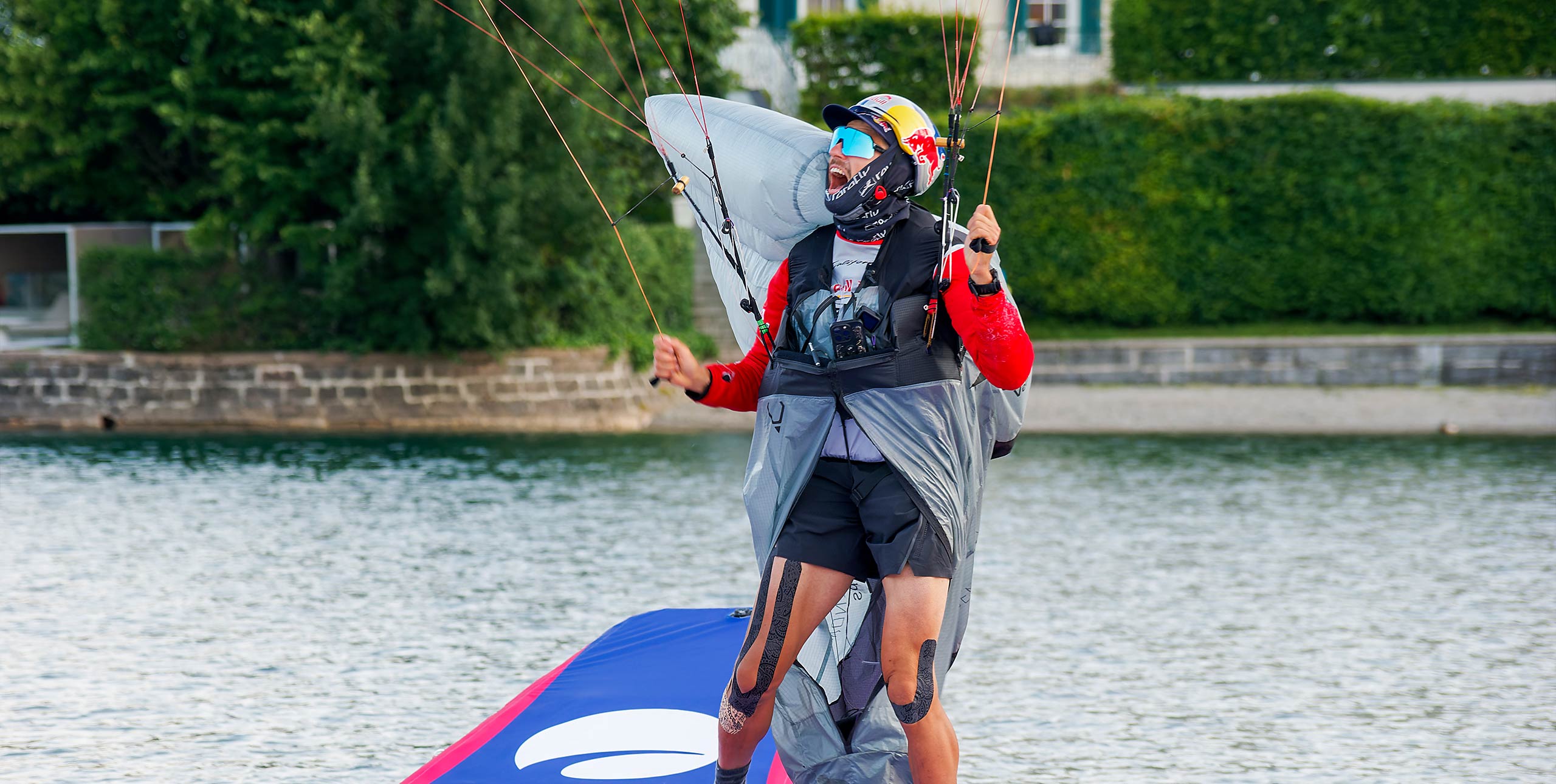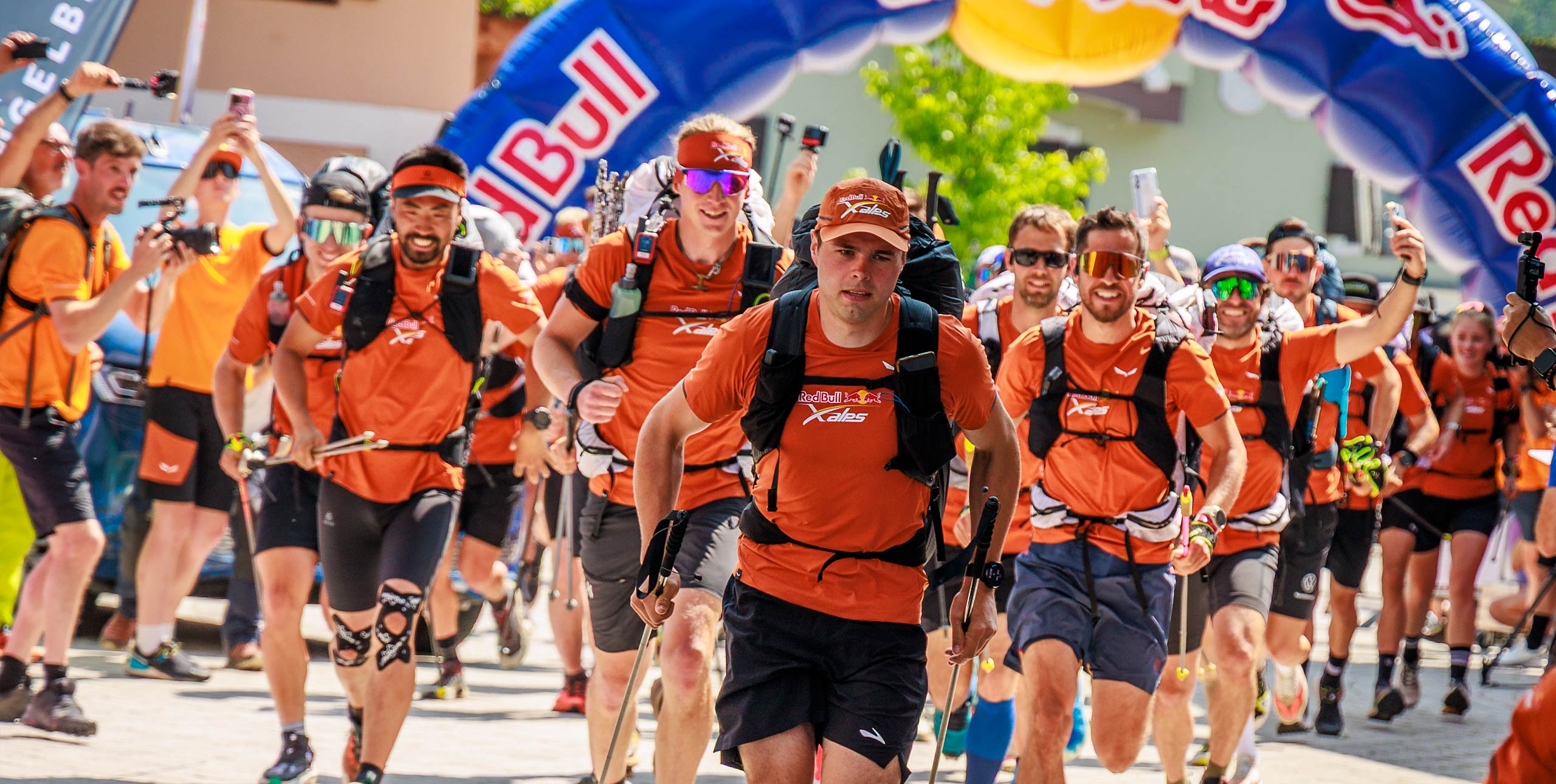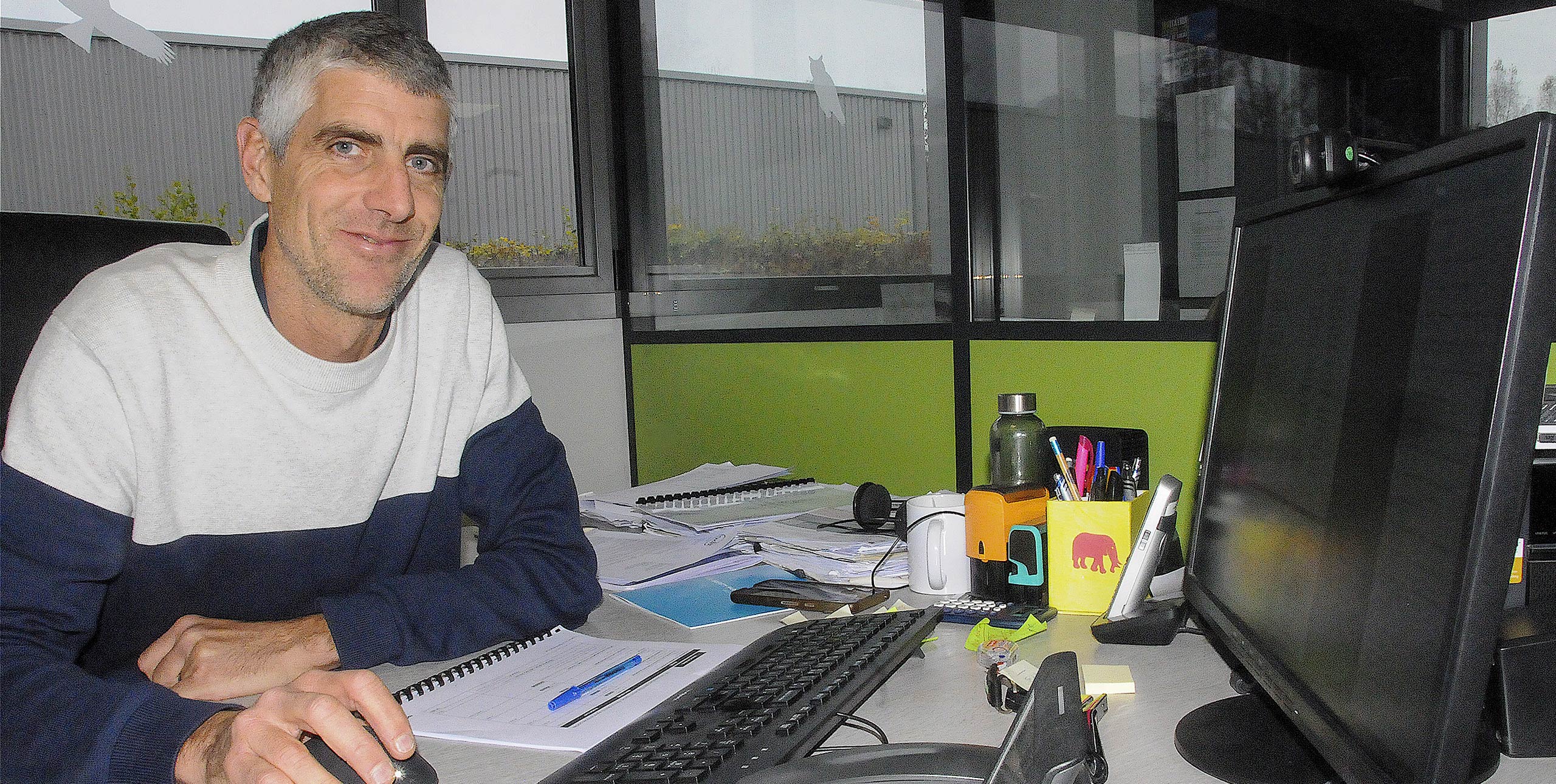The official Red Bull X Alps trailer for 2011
The Red Bull X-Alps will be remembered as the toughest paragliding competition of 2003. It may well go down as the toughest ever. Kaspar Henny was the first to land in Monaco and win the competition, but all those who entered were champions – first to be selected, and second to have had the guts to take part. First published in Cross Country magazine in October 2003, updated online January 2011.
On July 14 at 1.20 pm, 17 pilots took off from a glacier in Dachstein, Austria, and set off for Monaco. In just under 13 days, Kaspar Henny flew and walked the 772km landing at 12.15pm on July 27 on the roof of Jimmyz nightclub in Monaco to win the competition. Exhausted and elated, 35-year-old Kaspar had taken on the worlds toughest pilots, not to mention nature herself, and won.
Just under five and a half hours later David Dagault also arrived to take second place. The rest of the field were still spread over the route, with Jon Shaw still walking hard 509 km back down the course.
Kaspar Henny, 35, from Obersaxen, Switzerland is a trained forester, paragliding instructor and athlete. Hes competed in the PWC since 1993 and finished fifth overall in both 1999 and 2000 as well as placing third in the 1998 Europeans.
Kaspar reckoned the most decisive moment for him was during the very first flight, from Dachstein to just outside Zell am See. The conditions were difficult with weak thermals, a low cloud base and unpredictable valley winds and as a result, a lot of the pilots bombed out. Kaspar noticed a spot that was wind-sheltered, in sun, and took a chance of finding a thermal there. His decision paid off with a good flight giving him a lead on the others.
Kaspar’s critical decision though, was to not rest on his laurels after landing by Zell am See. By hiking through the night and the next morning to the Wildkogel, Kaspar managed to extend his lead significantly.
Kaspar’s strategy was simple but effective – always arrive at a launch point by noon, just when the thermic activity starts. His real trick was to always set both an optimistic goal for the day as well as a minimum goal. If he reached the optimistic goal – great. If he landed short of the minimum goal, then he did all he could to get there anyway. Kaspar said he was extremely stubborn about keeping to this strategy.
Kaspar now plans to spend at least four months in India bicycle-trekking with his girlfriend.
Travelling 772km in a straight line is hard enough, but the statistics David Dagault sent us tell an even tougher story. Over the 13 days, David actually travelled a total of 993km and climbed a total of 17,360 metres.
Out of that total he managed to fly 762.5km over 41 hours 35 minutes, and had to walk 230km, which took a total of 73 hours. That made an average per day of 58.7km flown, 17.8km walked and 1,336 metres elevation climbed. Many pilots further down the field ended up walking far further and for far longer.
For the full story of what it was actually like taking part in the worlds toughest paragliding competition, heres David Dagault, Alpine expert; Will Gadd, world open distance record holder, and Jon Shaw, relatively inexperienced wildcard entry.
Second-placed David Dagault and Nicky Watts: Team France
After the event, it felt like this race was over very quickly. Originally, I wanted to treat it as an adventure, but the challenge of the race overwhelmed everything and turned it into a tough and extreme trial.
The desire to win made me push everything to the limit: walking, launching, flying, landing. I would not have been able to keep going like I did for any longer … Monaco, but no further.
The big surprise of the race was the tactical side. I had prepared to fly and land in the mountains every night and bivouac. My plan was to rest enough each night to be able to fly well the next day (provided the conditions were forecast to be good).
But all the other athletes decided to walk a couple of km every evening, and then walk to a take-off the next morning. Therefore they could do 20km a day more than I was doing resting.
So, I changed my mind and did the same. The good thing was that it allowed me to meet up with Nicky every night, which was a bit more fun than sleeping on my own, in my glider, on the top of a mountain.
The best thing about the whole event was the places we flew through, the big mountains, the glaciers, the lakes … A fantastic mix of shapes and colours that kept changing from one valley to another.
I particularly remember the Hohe Munde part of Mieminger Gebirge mountain range just west of Innsbruck with its massive rocky face above the green valley. And the area around the Oberalp pass, the Furka pass, up to Fiesh.
This place is probably the most impressive place to fly that I know. The mountains are all very high, the glaciers are the biggest of the European Alps and you fly in the middle of them. The whole experience made me feel very tiny.
Trying to cross the Alps was an amazing thing to do. Its been great to have been one of the three teams who made it in such a short time. To me it was a very intense experience.
The end of the flight, from Galibier pass (near Briancon) to St Etienne de Tinee, will stay in my memory as one of my best times in the air ever. The last two hours were like a dream, jumping from one ridge to another in smooth air, crossing all these valleys to fly over the highest European road pass at 3,000 metres at ten past eight in the evening.
Sadly the competition killed the true spirit of the bivouac. There was no time to relax and enjoy the magic atmosphere of the mountains. “Keep walking when youre not flying” was the rule. Part of the potential enjoyment of this adventure was lost, and the rush of competition took over.
Despite the gruelling effort there were many humorous moments to lighten the day. On day one I landed only 18 km from the start. I had to walk along a road towards the next mountains when a police car stopped me. Being unable to produce ID, they wanted to take me to the police station.
I was in a fairly gruesome mood after having done so badly on my first day and furiously explained that I was a European citizen, in a competition, walking to Monaco. So I couldn’t go in his car and waste time driving to his office. Eventually he let me go, but I came close to spending the entire first night of the X-Alps negotiating my release from jail.
I lost 5 kg in 12 days. The stress and concentration was constant. I couldnt find any time to relax and can almost say that the easiest part was the walking.
Otherwise, every take-off, every landing, almost every minute of every flight was scary. Launching off cliffs, landing backwards a few times, and even getting within five metres of power lines. I lost my reserve in the air, and almost looped by accident flying in super strong conditions. That was tough, and I’m not a sensible pilot.
I’m really happy to have done it. I’m still amazed by how fantastic the human body, and especially, our brains are. Motivation was the key to this race. Only through sheer determination was it possible to overcome the daily pain, stress and fears, and keep pushing hard to the end.
Would I do it again? I would have to find some very good reasons for my body to accept so much suffering again.
Seventh-placed Will Gadd and Kim Csizmazia: Team Canada
The pilots in the X-Alps were very, very good. Never have I flown such fantastic air, and in such ridiculous places. Following David Dagault into the lee near Davos with only 8km/h groundspeed, he did one revolution from the free manouvres course before scraping over the ridge.
I thought it was so much fun that I did another three rounds of rotor surfing before getting over the same ridge. I wanted to ensure at least 30 metres of air under my puckered ass. That way, if I did crash, at least it would be hard enough that I’d have to quit. I’m a little scared of using speed bar over pointy rocks whilst low and in the lee, but apparently this is normal in the Alps.
Later that day, David finally pushed it too far, and did what he called, an “accidental tumble”. Good thing he’s a test pilot. I doubt I’d have had the skills to pull that one off. David and I walked and flew together for a couple of days, and I learned more flying with him than I have in years.
Near Chur we flew closely along the side of the valley at up to 90km/h. I liked the fact that we were above trees because that made it feel safer. Then I thought about hitting a tree at 90km/h. We finally both landed in the same field going backwards. Across the valley, Jimmy crashed, but not hard enough to quit. He decided to walk another 300km just to be sure he was OK. Crazy doesn’t begin to describe it.
Hiking was important, and very painful. I walked from the bottom of the Grimsel Pass to Verbier with Holger Herfurth. Alone, that walk would have been far too depressing. We started to hallucinate about various foods, so I suggested he walk in front. That way I could stab the steak on top of his head with my ski pole more easily.
Sometimes the hiking hurt so much all we could do was laugh about it. The reality is that most of the walking in the X-Alps is done on road, not in idyllic Alpine meadows as I’d expected, and walking at night along Alpine roads is far more dangerous than flying.
The best pilots flying the best wings flew the most, and hiked the least. Nobody made it to Monaco who didnt fly the vast majority of the route, no matter how good they were at hiking.
I did well until I made flying errors. After hiking for four days with only small flights I decided to go with the wind and fly down the Aosta Valley, instead of landing. I was sick of walking and just wanted to fly, but you had to fly in the right direction.
Hiking out in the Po valley really, really, sucked. Some people asked me why I went that way. It was because I was sick of walking, and thought maybe the flying would be better in Italy. My feet really regretted my decision.
Every pilot had a story or six about near-misses during the race. In a “normal” competition theres a committee that generally calls the day when conditions get really silly. In the X-Alps you did what you thought you could get away with. Rational decision-making was sometimes far away after hiking 1,300 metres feet up a pass and then finding conditions were marginal.
And finally, Jon Shaw and Jo Dee: Team UK
Jon came last in the race but deserves no less praise than any of the others. To compete, and survive, is enough.
After two weeks of Alpine training and two days of safety briefings, race day finally arrived. The launch was in snow at nearly 3,000 metres directly from a glacier, and on the edge of a big cliff, just for good measure. I wasn’t at all nervous about the launch until Hannes Arch told me about safety precautions like wires buried in the snow and mountain rescue teams on standby with ropes.
By the time he finished talking I was more than a bit anxious. My head buzzed with negative thoughts. Should I even have applied for the race? Would I screw up the launch and be left dangling over the edge? I watched Walter pull some big wingovers just above launch, and then Kaspar and a few others launched.
I didn’t want to be the last one, so with Hannes, Steve Cox and several photographers helping I launched cleanly, and climbed straight to 3,300 metres. I was having such a great time I nearly missed the smoke grenades signalling that the race was on, finally after all the anticipation and preparation, we were on our way.
What took me to that mountain? Mostly determination. Competing in the Red Bull X-Alps required a focus beyond almost anything I’d done before. The build-up had been weeks of logistics and planning, and hundreds of hours of training, mostly hiking with a pack which proved ideal as my race turned out to be a great deal more hiking and climbing than flying.
The Red Bull communications crew did a fantastic job making paragliding more accessible to thousands of people. For the last five years my Mum has told everyone that I jump from mountains and float to the ground instead of jumping from an aeroplane. By the end of the race, she was sending messages telling me the weather would be quite unstable with a high base, and a good chance to fly a decent distance.
Most days started before six am, and went on until long past dark. Physically it was extremely demanding, but I was prepared for this. Mentally, it was much tougher than I expected. I twice bombed out from a 2,600 metre launch. This doesnt seem possible in regular flying, but this wasn’t regular flying.
I was usually alone in an empty sky, flying from and to places I’d never been before, and along valleys that you saw for the first time as you crossed some lonely col. It was all made far tougher by a lack of knowledge of the local valley winds, and some pretty extreme conditions.
But, in no way did this detract from the adventure. It added to it, as did the fantastic scenery and the people we met along the way. Although none of my flights were particularly long, some were very memorable with stunning views of the big Alpine peaks followed by backwards landings near power lines.
Speaking to the other guys at the end, this seemed to have been the norm. After 13 days of extreme physical and mental effort, I heard that Kaspar had landed in Monaco and send him a text of congratulations. I made it as far as Switzerland.
Did I accomplish much? Yes definitely. My knowledge of Alpine flying and local weather improved dramatically. Hats off to Kaspar, Dav and Boxi. It was fantastic achievement, and only the guys that took part know what it took to get where they did!
Finally, the thanks: All three pilots said that the whole event would never have taken place without the massive effort put in by Red Bull, Hannes Arch, the other organisers, sponsors and most of all their own support crews.
Will Gadd summed up the feelings of all three with his comments about Kim Csizmazia, his team partner: “Your support person is God and should be treated as such. If I could change one thing about this race it would be to give more press to the people who were essential to the pilots.
“This was a team event. Buy them nice things and after the race, apologise to them for being a moron during the event.
“Without exception, from the organisers, to every pilot I walked, talked, or flew with, the best part of this race was the people. I never felt alone knowing that somebody was out there suffering with me.”
• Got news? Send it to us at news@xccontent.local. Fair use applies to this article: if you reproduce it online, please credit correctly and link to xcmag.com or the original article. No reproduction in print. Copyright remains with Cross Country magazine. Thanks
Subscribe to the world’s favourite hang gliding and paragliding magazine











